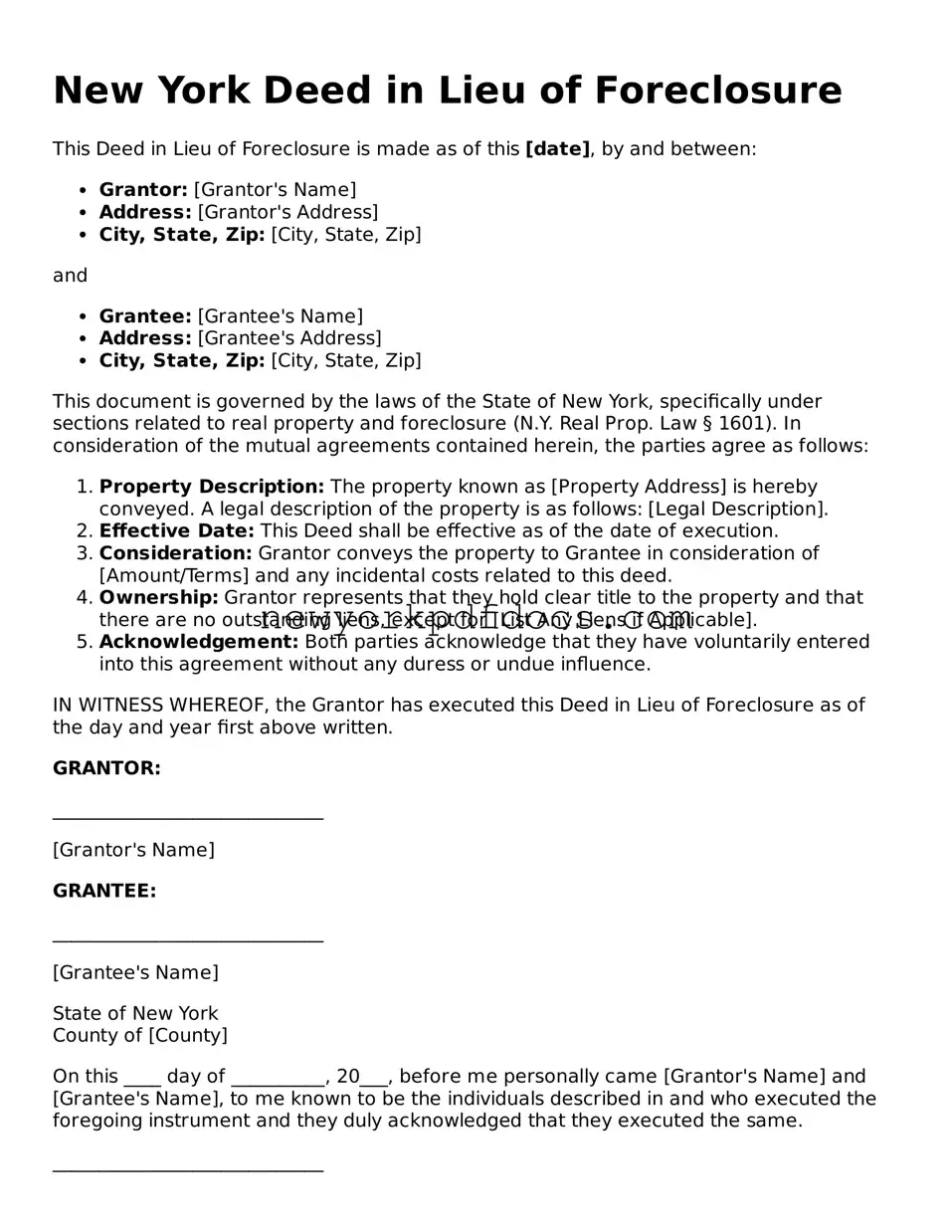New York Deed in Lieu of Foreclosure
This Deed in Lieu of Foreclosure is made as of this [date], by and between:
- Grantor: [Grantor's Name]
- Address: [Grantor's Address]
- City, State, Zip: [City, State, Zip]
and
- Grantee: [Grantee's Name]
- Address: [Grantee's Address]
- City, State, Zip: [City, State, Zip]
This document is governed by the laws of the State of New York, specifically under sections related to real property and foreclosure (N.Y. Real Prop. Law § 1601). In consideration of the mutual agreements contained herein, the parties agree as follows:
- Property Description: The property known as [Property Address] is hereby conveyed. A legal description of the property is as follows: [Legal Description].
- Effective Date: This Deed shall be effective as of the date of execution.
- Consideration: Grantor conveys the property to Grantee in consideration of [Amount/Terms] and any incidental costs related to this deed.
- Ownership: Grantor represents that they hold clear title to the property and that there are no outstanding liens, except for [List Any Liens if Applicable].
- Acknowledgement: Both parties acknowledge that they have voluntarily entered into this agreement without any duress or undue influence.
IN WITNESS WHEREOF, the Grantor has executed this Deed in Lieu of Foreclosure as of the day and year first above written.
GRANTOR:
_____________________________
[Grantor's Name]
GRANTEE:
_____________________________
[Grantee's Name]
State of New York
County of [County]
On this ____ day of __________, 20___, before me personally came [Grantor's Name] and [Grantee's Name], to me known to be the individuals described in and who executed the foregoing instrument and they duly acknowledged that they executed the same.
_____________________________
Notary Public
